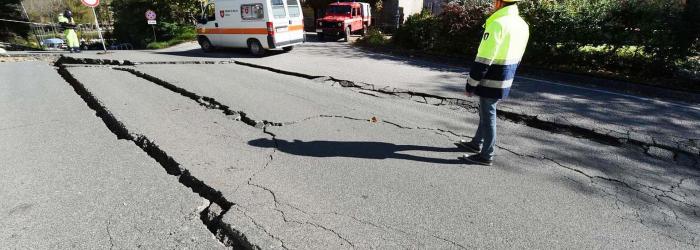Ridgecrest Earthquake Recovery Help

(Image by Marcello Migliosi from Pixabay)
UP has guided thousands of California residents on earthquake damage, repair methods, insurance negotiations and settlements since the aftermath of the 1989 Loma Prieta earthquake and the 1994 Northridge Earthquake. Our tools, tips and resources focus on:
- Making sure structures have been thoroughly inspected by qualified, independent professionals
- Identifying structural and cosmetic damage from the earthquake versus pre-existing damage
- Understanding the terms and conditions of insurance policies in relation to earthquake damage
- The importance of obtaining accurate and complete estimates to repair all damage caused or exacerbated by the earthquake
We invite all California residents impacted by the Ridgecrest Earthquake use our Roadmap to Recovery™ tools, information and services.
The 411:
- Earthquakes can cause obvious, visible damage that anyone can see, but also can cause damage hidden behind walls and in attics, basements and crawlspaces and on roofs. So just because you don’t see damage doesn’t mean your property hasn’t sustained damage.
- Regardless of whether you have earthquake insurance or not, focus on starting a recovery journal and making sure your property gets thoroughly inspected by one or more experienced local contractors or structural engineers. Here is an inspection checklist.
- Almost all home insurance policies exclude earthquake damage, so unless you have a separate policy or rider that covers quakes, or unless your home was damaged or destroyed by a fire following the quake, it may not make sense to even file a claim. If your home was damaged by a fire following the earthquake, you can and should submit a claim under your home insurance.
- If you have earthquake insurance, check your deductible. The way it works is you can put in a claim regardless of the amount and severity of the damage, but only the portion above your deductible will be covered. If the cost of fixing the damage is less than your deductible, you won’t recover any insurance benefits for repairs. For example – if you have a 10% deductible and $200,000 in dwelling coverage, your deductible amount is $20,000. If a reputable expert tells you it will cost $15k to fix your home – you’re on your own paying for repairs. If the cost to repair your home is $100,000, you’ll recover $80,000 toward repairs. In that second scenario – you won’t need to spend $20k to get the $80k – but you will only recover $80k and will need to cover the $20k on your own.
- Not all benefits under earthquake policies are subject to a deductible. Under most policies, if your home is uninhabitable for a period of time – you can collect loss of use benefits without application of a deductible.
- If FEMA assistance becomes available, be sure to register. Your deductible can be considered and “uninsured” portion of your loss.
If both the ground and your nerves are shaken and you now want to buy earthquake insurance, use UP’s earthquake insurance shopping tools.
First steps to getting oriented and organized:
If your home has been damaged or destroyed, below is a checklist to help keep you on track during this stressful time.
- Take care of your family’s needs first.
- Local, reasonably equivalent housing is a priority – talk to your insurance company about the housing expense allowance.
- Keep a diary of who you talked to, the number you called, date and time, what was said. Keep all of your paperwork organized and together.
- Take photos of your property before any cleanup or debris removal.
- Get a complete and current copy of your insurance policy.
- Ask for a cash advance for Additional Living Expenses (ALE).
- Do not rush into signing contracts and avoid making major financial decisions in the first few weeks.
- Check references carefully before hiring any vendor or professional
Support Resources:
Expert Answers to Your Questions: The ”Ask an Expert” tool is an easy and safe way to ask direct questions to attorneys, claims professionals and previous disaster survivors who serve as UP volunteers and get the answers you need. The expert doesn’t see your contact info, but you can contact them if you want to follow up on their answer. To use the forum, please visit our Ask an Expert page.
Related Information and News:
